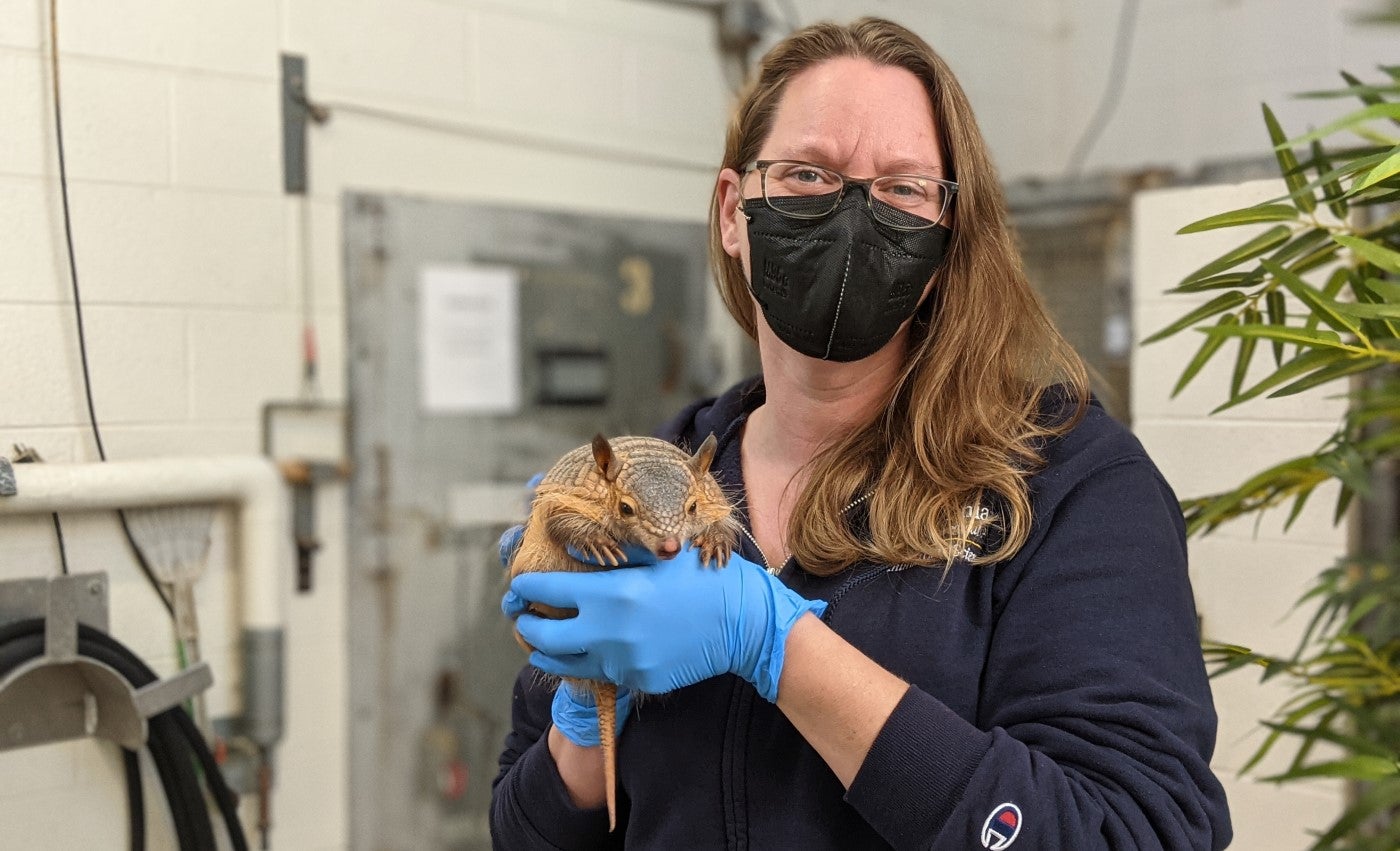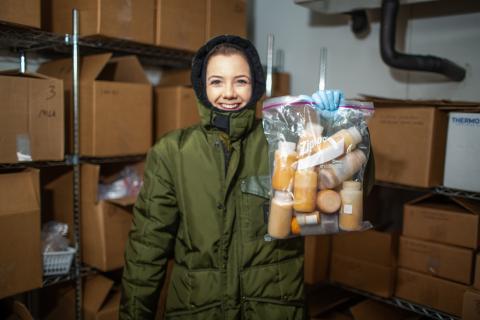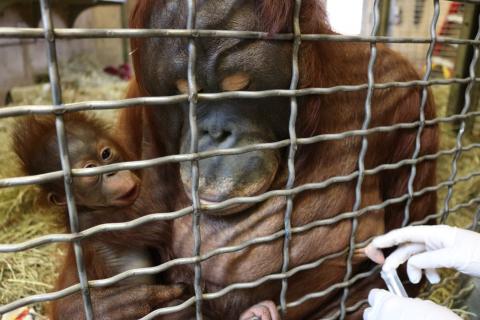Milk Repository

Did you know the Smithsonian’s National Zoo and Conservation Biology Institute is home to the largest sample collection of exotic animal milk in the world?
The Milk Repository program, based within the Department of Nutrition Science at the Smithsonian’s National Zoo and Conservation Biology Institute, is a world-class scientific resource for veterinarians, nutritionists and animal care specialists. Scientists at the repository preserve and analyze milk samples for their nutritional composition, enabling the replication of formulas based on species-specific nutritional needs. Through the operation of this program, the Smithsonian helps zoos and animal care facilities across North America meet the nutritional needs of neonatal and developing mammals in human care. The Milk Repository program is part of the pan-Smithsonian Cryo-Initiative, which aims to manage and share Smithsonian’s frozen biomaterial to better understand and sustain biodiversity.
The Milk Repository includes more than 16,000 individual samples taken from more than 200 species of mammals—and is still growing!
A Mammal’s First Food
Milk is essential to the growth and development of all young mammals. All milks contain the necessary ingredients for life, but the proportions can differ greatly between species. At the Smithsonian nutrition laboratory, scientists analyze milks to see how much energy, fat, protein, sugar, calcium, phosphorus and other minerals are present, and create nutrition profiles based on that analysis. Formulas developed by Smithsonian scientists have helped young mammals thrive at the Smithsonian and at zoos around the country.
Replacing Milks
The Milk Repository is a valuable resource for zoos with young animals who are unable to nurse from their mothers. In the event that a decision to hand-rear or assist feed is made on behalf of a young mammal, the Smithsonian's nutritional composition research may be applied as a resource to help formulate a species-appropriate replacement. In addition to milk composition, nutritionists also develop hand-rearing protocols based on mammal lactation physiology, suckling patterns, volume and feeding frequency.
The Latest Research
Milk is a complex biological fluid; it contains more than just nutrients. Research conducted at the Smithsonian has enabled not only the discovery of variable milk compositions across species, but have also made preliminary investigations of immunoglobins, maternal gut microbiomes, hormones and growth factors—all of which are important for the health and development of mammals. Milk samples continue to be collected and accepted within the Milk Repository.
Recent Work

Guess That Milk Quiz ›

Making Sense of Animal Milks ›

Saving Cheetah Cubs One Drop of Milk at a Time ›
